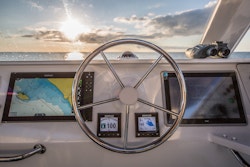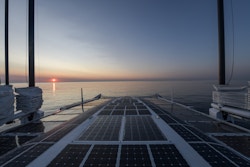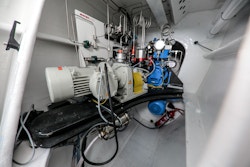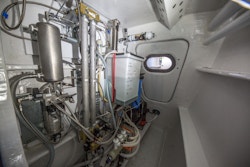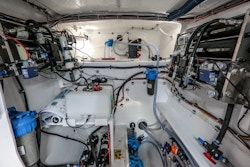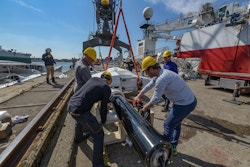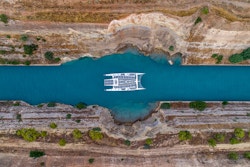
Energy Observer left Helsinki yesterday to cross the Gulf of Finland towards Tallinn for its 40th stopover, before its Russian stopover in St Petersburg.
Energy Observer left Helsinki yesterday to cross the Gulf of Finland towards Tallinn for its 40th stopover, before its Russian stopover in St Petersburg.
Energy Observer chose complementary storage systems: short-term storage in a set of Li-Ion batteries, and eight hydrogen tanks for long-term storage.
Energy Observer continues is in Helsinki for the 39th stopover of its world tour.
Hydrogen has a very high energy content: for the same weight, it contains up to three times more energy than diesel, and 2.5 times more than natural gas. That said, we know how to store natural gas in tanks or pipelines. Storing hydrogen is more difficult.
Energy Observer arrived at Stockholm for the 38th stopover on its journey around the world, that will tour Northern Europe this year.
Currently, 95% of the world’s hydrogen supply is from fossil fuel, through a reforming process using methane, the main component of natural gas. Electrolysis using a renewable energy source is a solution for the future use of green hydrogen on a large scale.
From the Port of Hamburg, Energy Observer sailed 250 miles to reach the port of Copenhagen this morning. After sailing up the Elbe and from Brunsbüttel, the ship entered the Kiel Canal to enter the Baltic Sea.
The Energy Observer is equipped with a reverse-osmosis desalination system with several levels. When two volumes of water – one salty and the other not – are put together, natural movement is created: the fresh water is attracted to the salty water.
Our catamaran will be moored near the impressive Elbe philharmonic building built and will take par in the Hamburg Port Anniversary which will celebrate several centuries of intense activities.
The 18th of April was an expected and important day for Energy Observer, which has equipped itself with a new technological brick for wind propulsion: two Oceanwings®, rotating, self-supporting and 100% automated, which will increase the vessel’s speed and produce hydrogen during navigation by sea water electrolysis.
Energy Observer, the first hydrogen vessel around the world, makes its 35th stopover in the heart of Amsterdam, Europe’s hub, the second largest port in the Netherlands and the fifth largest port in Europe.
Energy Observer has been examined with a fine-tooth comb. Every nook of its decks, floats and infrastructure is now fitted with custom photovoltaic panels. A technical conundrum for Hugo Devedeux, on-board engineer who is in charge of the solar component of the experimental catamaran optimization project.




